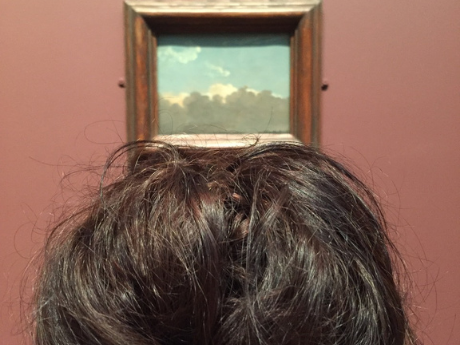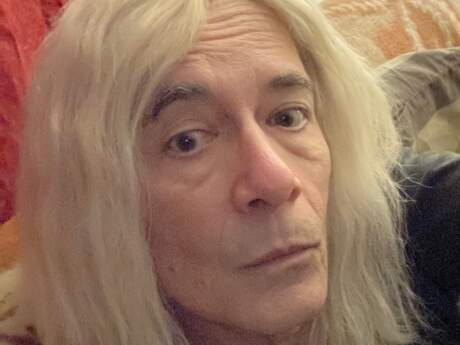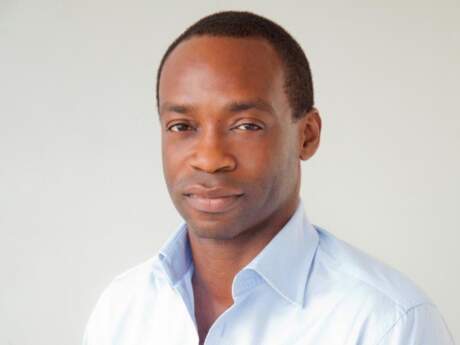Stopping By
Stopping by with Matthea Harvey

During this extraordinary moment—of both pause and activism—we asked writers, musicians, curators, and innovators to reflect on the power and memory of language, shared spaces, and this moment in time.
Matthea Harvey is the author of five books of poetry—If the Tabloids are True What are You?, Of Lamb (an illustrated erasure with Amy Jean Porter), Modern Life, Sad Little Breathing Machine and Pity the Bathtub Its Forced Embrace of the Human Form. She has also written two fables for children and adults, The Little General and the Giant Snowflake (illustrated by Elizabeth Zechel) and When Up and Down Left Town (illustrated by Amy Jean Porter) as well as a picture book, Cecil the Pet Glacier, illustrated by Giselle Potter. A recipient of the Kingsley Tufts Award and a Guggenheim fellowship, she teaches poetry at Sarah Lawrence College.
What is the last thing that moved you?
Two days ago, a friend sent me the “Tiny Horse” sketch from Saturday Night Live where Timothée Chalamet (playing the son of farmers) is told that the family has to get rid of their animals, including his beloved tiny horse, which is the size of two sticks of butter. The lyric, “There he is, my tiny horse, he’s extra tiny today” is still galloping around my head. It’s kind of perfect—heartbreaking, sincere and ridiculous.
Is there a book that changed your life?
This last year, Ross Gay’s The Book of Delights has been a kind of compass. It taught me how to look for moments of beauty—the cat watching a storm of seedpods, sparrow pairs flying by with impossibly large twigs in their beaks, and the minute tenderness in human interactions. When I took my first flight after being vaccinated, I sat on the plane determined to see a “Ross Gay moment” and I did—one of the flight attendants was reading the safety protocols and the other flight attendant petted her thick black ponytail the whole time she was doing the announcements.
If you could recommend one book or piece of art to everyone, what would it be?
I’d much rather recommend fifty than one. I’m a polyamorous matchmaker. Autobiography of Red by Anne Carson, Grapefruit by Yoko Ono and House Inspections by Carsten René Nielsen (a Danish prose poet).
What is your first memory of poetry?
Not my first, but probably my most important was reading “Southbound on the Freeway” by May Swenson in Mr. Zuege’s fourth grade class. The speaker in the poem is an alien hovering over the Earth, trying to understand the parameters of our world, who mistakenly thinks that cars are the inhabitants of the planet and that the humans inside the cars are their intestines: “The creatures of this star /are made of metal and glass. / Through the transparent parts /you can see their guts.” That shift in perspective opened a trapdoor in my mind that hasn’t ever closed.
The pandemic continues to keep many public spaces (libraries, concert halls, museums, etc.) closed. What space—and community—do you miss the most?
I would be thrilled to go anywhere, truly. I’ve sat in the car during a rainstorm just for a change of scene. I miss the Museum of Art and Design. I miss Brunswick Café, where I used to go most weeks, and which closed during the pandemic. I’ve deeply missed the community of my Saturday pottery class. I can’t wait to go back and keep experimenting making nonfunctional horse-dinosaurs with wheels. And after a year of teaching on zoom, I long to see my students in person, although I have enjoyed meeting their many pets—so many poets have cats!
When it’s safe to travel again, where are you most looking forward to going and what are you most looking forward to doing there?
I’d like to go to a city I’ve never been to before, search out all their weirdest museums and junk stores and try food I’ve never tasted before.
Who is a living writer you most admire?
Shaun Tan. In his Tales from Outer Suburbia, there’s a piece called “Distant Rain” which imagines (in text and image) bits of abandoned poems coming together to create a giant paper ball that floats above the city streets.
If you were to choose one poem or text to inscribe in a public place right now, what would that be? And where would you place it?
I live close to Prospect Park in Brooklyn, and this year I’ve loved seeing Lucille Clifton’s words, “Come celebrate / with me that everyday / something has tried to kill me / and failed” woven in neon into a fence at the bandshell (created by Brooklyn Hi-Art! Machine). Staying close to home (so I could see people’s reactions), I’d make Brenda Shaughnessy’s “Why Is the Color of Snow” out of giant ice letters and place it on Prospect Park’s Long Meadow after a snowstorm.
What do you see as the role of art in public life at this moment in time?
Ideally, it offers us necessary glimpses into other brains and other worlds (real or invented) which result in new neurons, an expanded heart, and an extra set of eyes.
Are you working on anything right now that you can tell us about?
I’ve always been interested in the way we humans want to box everything in, so I’m working on a book of short personal essays about Luke Howard (the inventor of cloud taxonomy), Josephine Bonaparte, face blindness, boxes, roses, cloud painters and a number of other subjects, titled All of the Above. It has a visual element too—I’ve taken thousands of Polaroids of every cloud or cloud-like object (flowers, a fluffy dog, a blurry pile of spaghetti) that appears in twelve seasons of Keeping up with the Kardashians and am creating my own Latin taxonomy of Kardashian Klouds.
Photo by Robert Casper.


